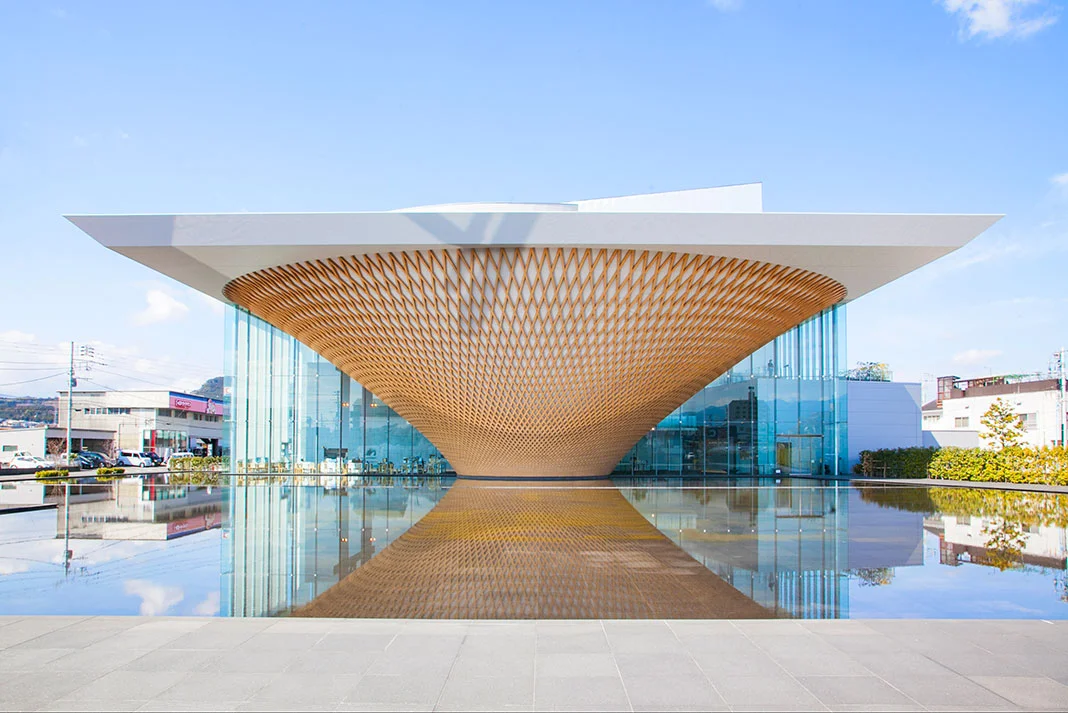What is the 【Mt. Fuji World Heritage Centre, Shizuoka】?
The Mt. Fuji World Heritage Centre, Shizuoka is located in Fujinomiya City, Shizuoka Prefecture.
It is a facility focused on Mt. Fuji, which was registered as a cultural world heritage site in June 2013. People visit the museum from all over the world to learn about Mt. Fuji, from the artistic qualities of the mountain to the history of faiths surrounding it, and its development as a volcano.
In addition, Fujisan Hongu Sengen Taisha, the head shrine of the approximately 1,300 Sengen shrines found across the country, is located nearby, indicating the depth of the history of faith related to Mt. Fuji.
Now, I will introduce you to the highlights of the Mt. Fuji World Heritage Centre and tell you how to get around this facility!!
Table of Contents
The magnificence of the building is overwhelming, and you cannot afford to miss the beautiful reflection on the water basin! It’s so instagrammable!
At the museum, you will see many designs that make use of Mt. Fuji’s beautiful, conical form. The first thing that struck me was the splendid, powerful exterior, built in an inverted conical form. In front of the museum is a water basin that draws spring water from Mt. Fuji itself. When you look at the building from the front, the inverted cone building is reflected on the water, revealing the beauty of Mt. Fuji’s conical shape. The building is shaped like an upside-down Mt. Fuji, so when you look at the famous “upside-down Fuji” in photographs, you can also see a “reverse-upside-down Fuji.” This has made the museum into a new Mt. Fuji viewing spot, and an ideal location to share on social media.
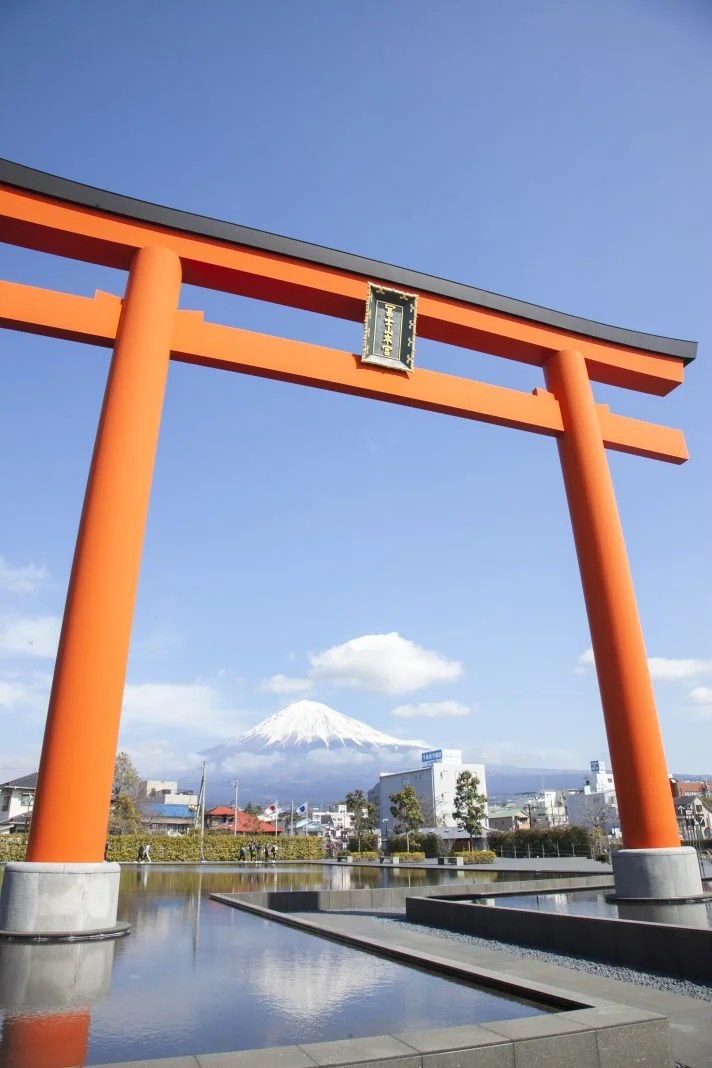
From here, you can see not only the buildings but also the real Mt. Fuji.
I bet this is the only place in the world where you can capture not only the giant Torii gate and Mt. Fuji towering on the far-off horizon, but also the upside-down Fuji, all together in one shot!
Let’s go inside the museum!
Enter the museum through the entrance on the right as seen from the front.

When looking from the outside, you will see that the inside of the building is constructed on a slope that spirals upwards so that you can climb up. When looking from the inside, you will understand why it’s been built this way. While the exterior was characterized by wooden lattices, the interior’s esthetic is quite the opposite. I was surprised by how futuristic it looks!
Simulating the experience of climbing Mt. Fuji – Ascending Fuji
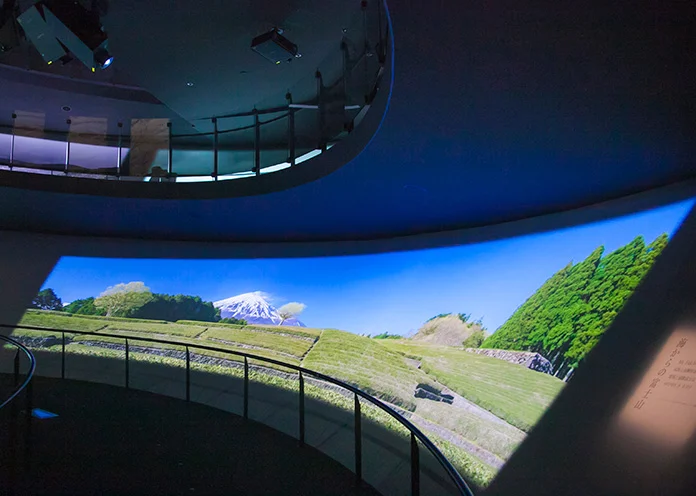
When you enter the building and start going up the slope, you will see one of the permanent exhibits entitled Ascending Fuji.
Landscapes from the mountain trail are projected on the walls, giving visitors a simulated experience of climbing the mountain from the sea, which is uniquely possible from Shizuoka Prefecture. The scenery is projected as a time-lapse video, and as you ascend the slope, the scenery gets closer and closer to what you would see at the summit of the real Mt. Fuji.
The image projected changes from moment to moment and scene to scene. The image above shows Obuchi Sasaba, which is famous even within Fuji City as a great location to take pictures of tea plantations and Mt. Fuji.
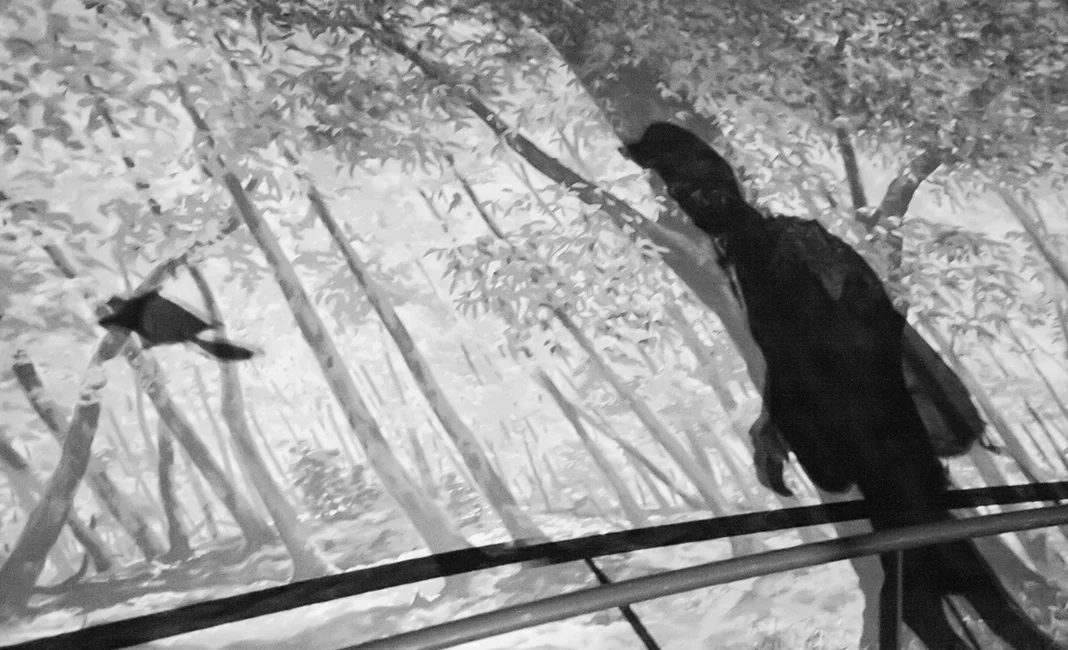
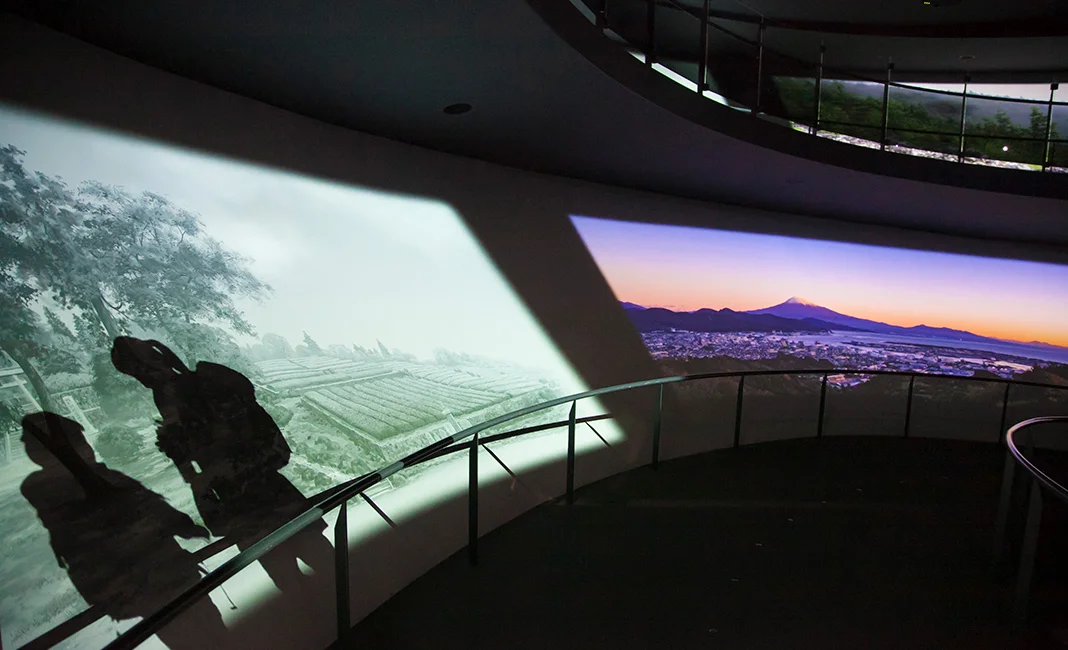
Climbers also appear on the walls at regular intervals! They’re just shadows, but your own shadow will also be projected by the light from the projector, so it looks as if you’re climbing the mountain together. You will also see the silhouettes of animals in the forested zones.
The picture above shows a flying squirrel, but I also saw deer!
The scenery changes as you climb, so it feels as if you’re climbing Mt. Fuji. (Although climbing for real would be much more challenging.) Small children and seniors can also enjoy this experience. It feels like “Another small Mt.Fuji.”
The powerful and beautiful Mt. Fuji
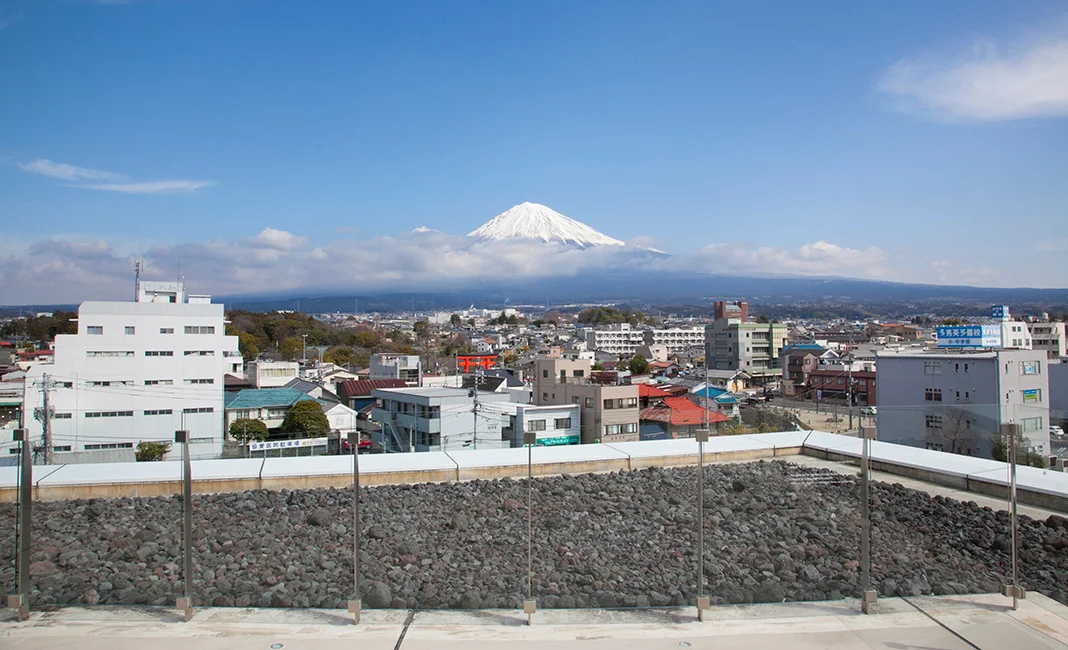
When you finish “Ascending Fuji,” you come out to an open terrace. Beyond the streets of Fujinomiya City spread out below you, you can see the magnificent Mt. Fuji towering above the clouds.
You can spot the red Torii gate of Fujisan Hongu Sengen Taisha shrine. It was a bit cloudy on this day, so Mt. Hoei was hidden. Of course, the photographs from the terrace were also beautiful, but my personal recommendation is…
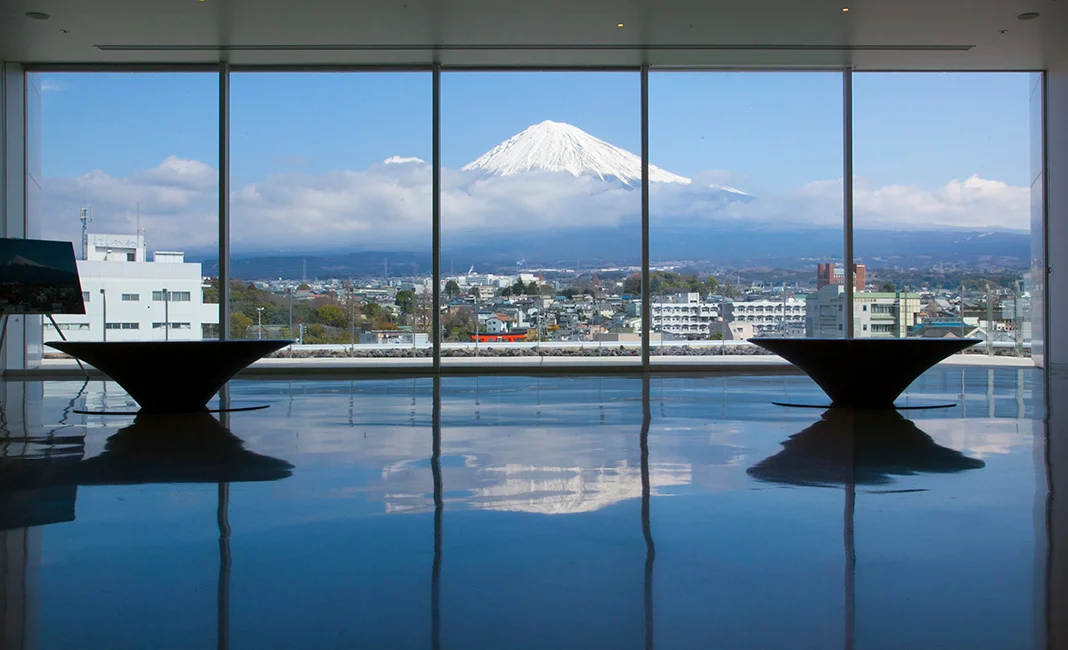
This one! The upside-down Fuji benches and Mt. Fuji reflected on the spotless floor!
Photo-worthy spots are not only outside! If you visit, take a step back and ready your camera!
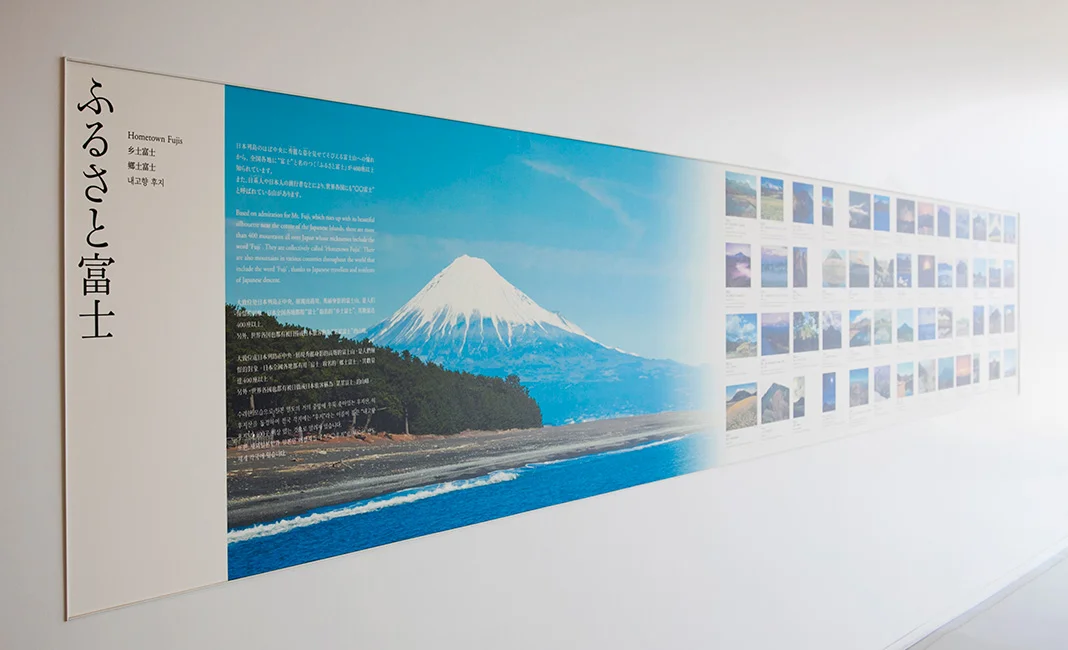
On the wall, there is a section called “Hometown Fujis”. It features photos taken all over the country of scenes that look like Mt. Fuji.
Learn about the roots and faith of Mt. Fuji
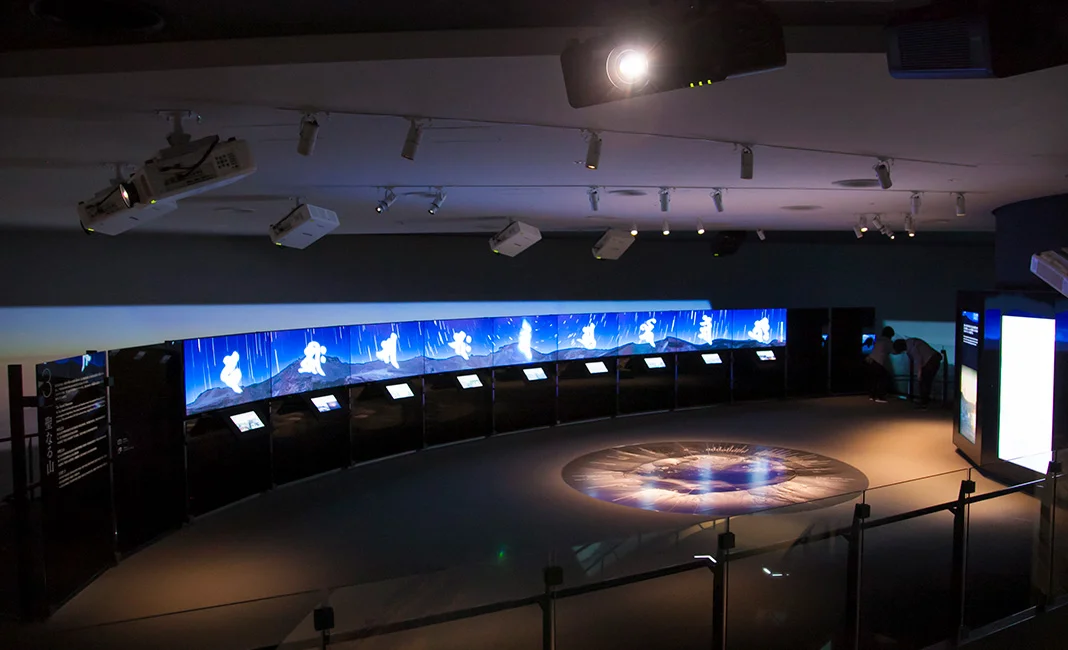
After viewing the dynamic Mt. Fuji, it’s time to descend into the building. Opposite the ascent are exhibition floors with monitors that operate in sync with each other. The floors are named Fierce Mountain, Sacred Mountain, and Beautiful Mountain, respectively, and they show how Mt. Fuji took on the form that it has today, how it became a subject of faith, and how it serves as a source of inspiration for works of art.
With the help of images from the touch panels, I was able to deepen my understanding of Mt. Fuji! It was so interesting, I might have to become a regular visitor.
From the fish to the birds: Mt. Fuji as a nurturer of ecosystems
When you exit the slope zone, you get to the section called Nurturing Mountain which describes Mt. Fuji’s ecosystem.
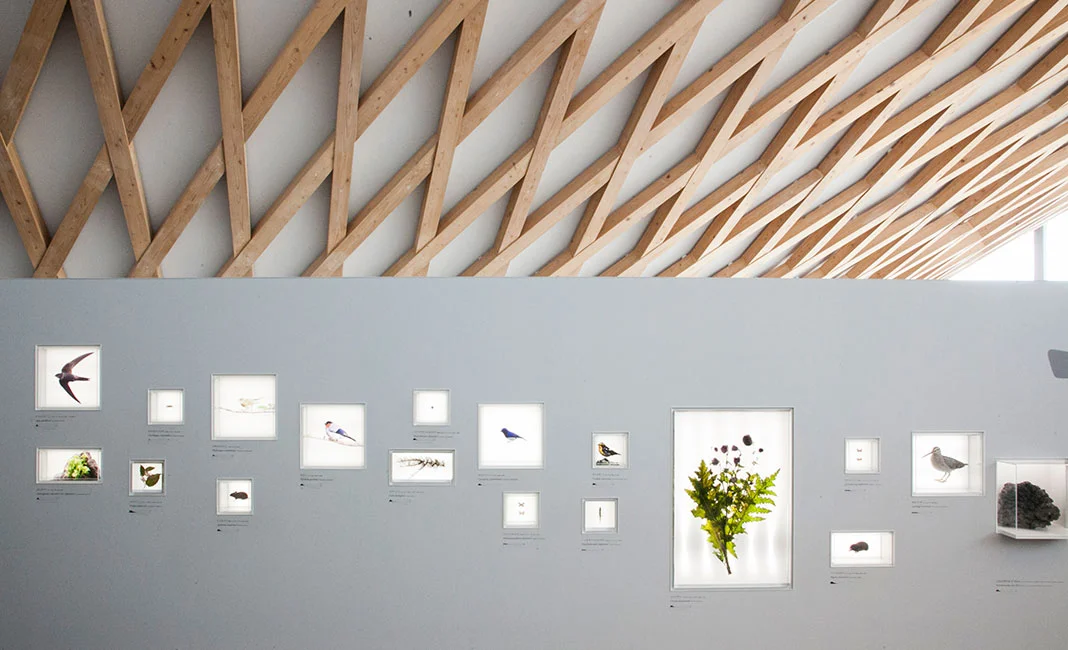
Measured from the bottom of Suruga Bay (roughly 2,500 meters below sea level), Mt. Fuji is over 6,000 meters tall. And apparently, the meltwater and rainwater from Mt. Fuji also gush forth from the bottom of Suruga Bay, the deepest bay in Japan. The influence it has is just immeasurable.
The flora and fauna of the mountain are displayed like in the photo above, together with explanations of where on Mt. Fuji these plants and animals live.
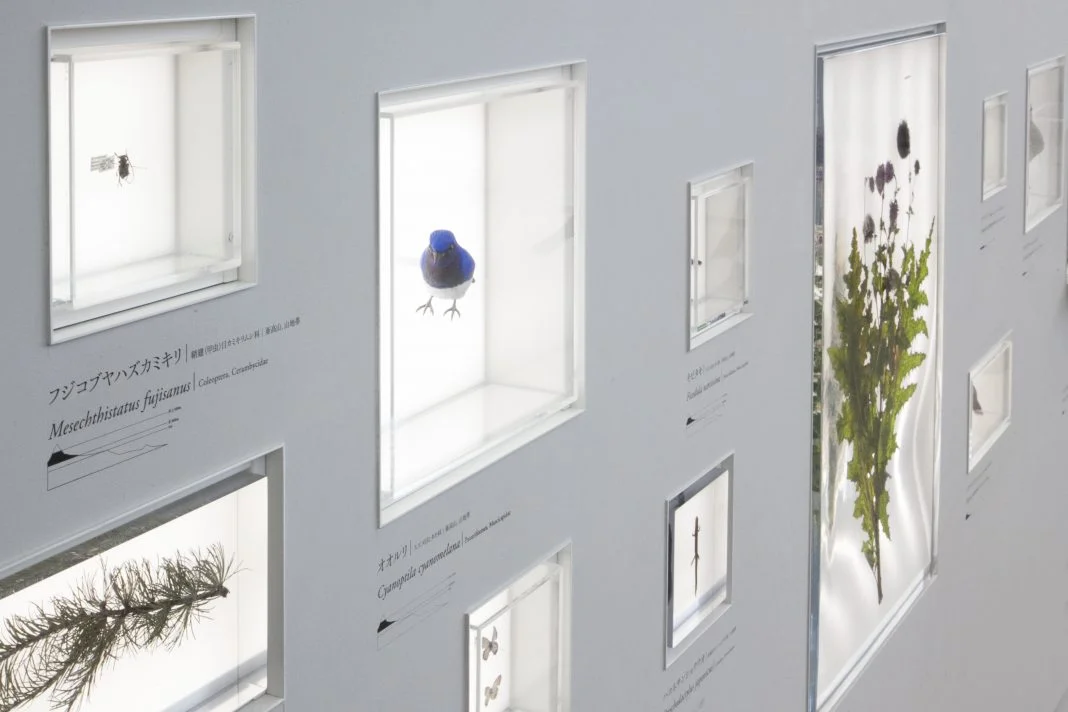
Large animals and sea creatures are shown with silhouettes that indicate their size.
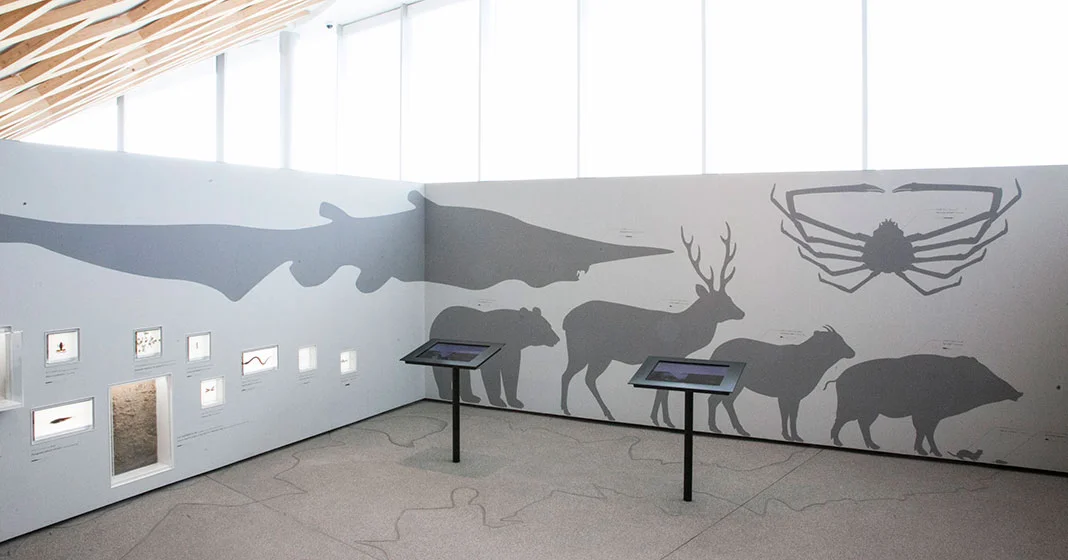
The sizes of the deer and bear are of course impressive, but what surprised me the most was how huge the crab was.
It’s a Takaashigani or Japanese spider crab, which is known to be the biggest crab in the world.
The only reference points I had were red king crabs and Japanese freshwater crabs, so I was astonished by the spider crab’s long legs. The fishing grounds for spider crabs are at Numazu City, and if you go there, you will find restaurants that serve dishes made with spider crab.
I’d like to go there sometime and give them a try.
On the opposite side of the exhibition…
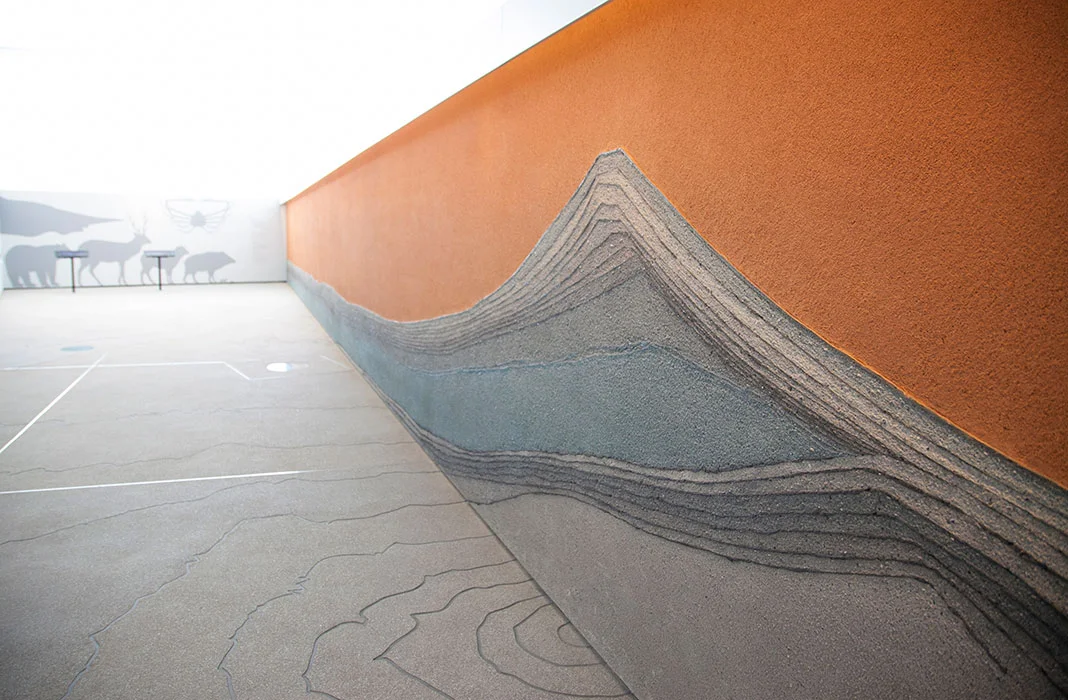
Mt. Fuji covers a whole wall!
Does it seem to be made of some kind of special soil? The wall shows a geological cross-section. Could it accurately show the real geology of Mt. Fuji?
Mt. Fuji actually extends beyond what you can see in my photograph.
Let’s keep going!
The next section is Inherited Mountain. The previous sections have shown the beauty of Mt. Fuji, how it came to be, and what kind of plants and animals reside there, but this section will tell you about Mt. Fuji as a volcano. Mt. Fuji is truly fearsome when it erupts.
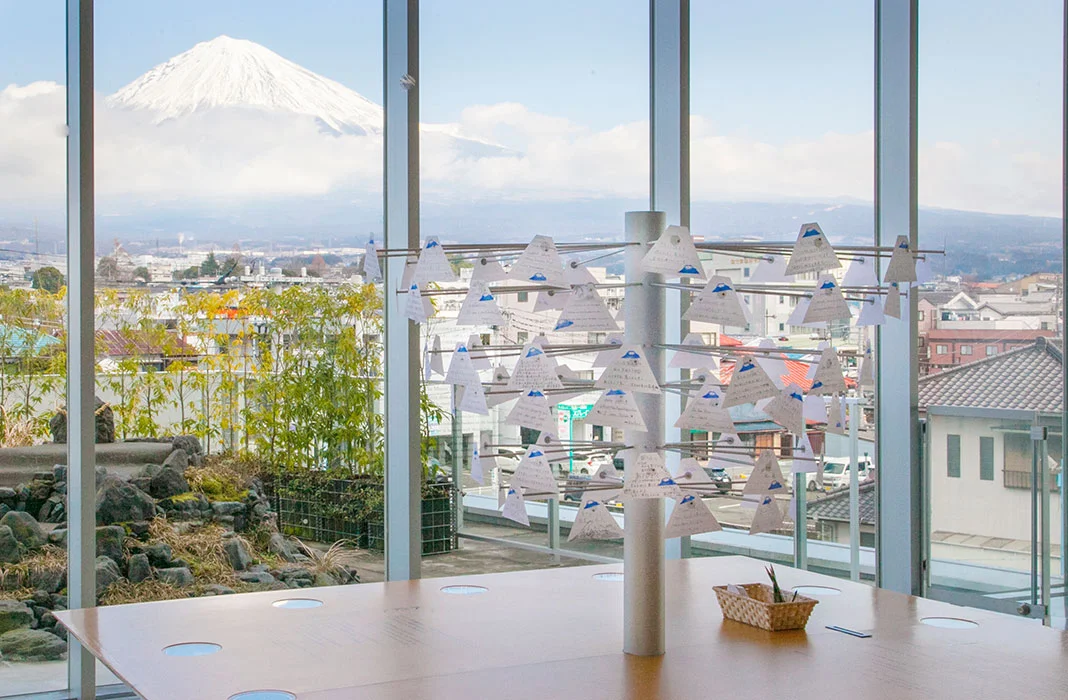
On the opposite side was a section where you can write your wishes on little strips of paper.
These pieces of paper were also shaped like Mt. Fuji and were so cute! Although you can’t see it from the photograph, everyone left wonderful wishes.
The Mt. Fuji you can see through the window will surely make them come true.
Following the exhibits…
The last thing I saw was the Movie Theater. It shows three different films according to the schedule. They are the Scroll of Heaven, the Scroll of Space, and the Scroll of Earth.
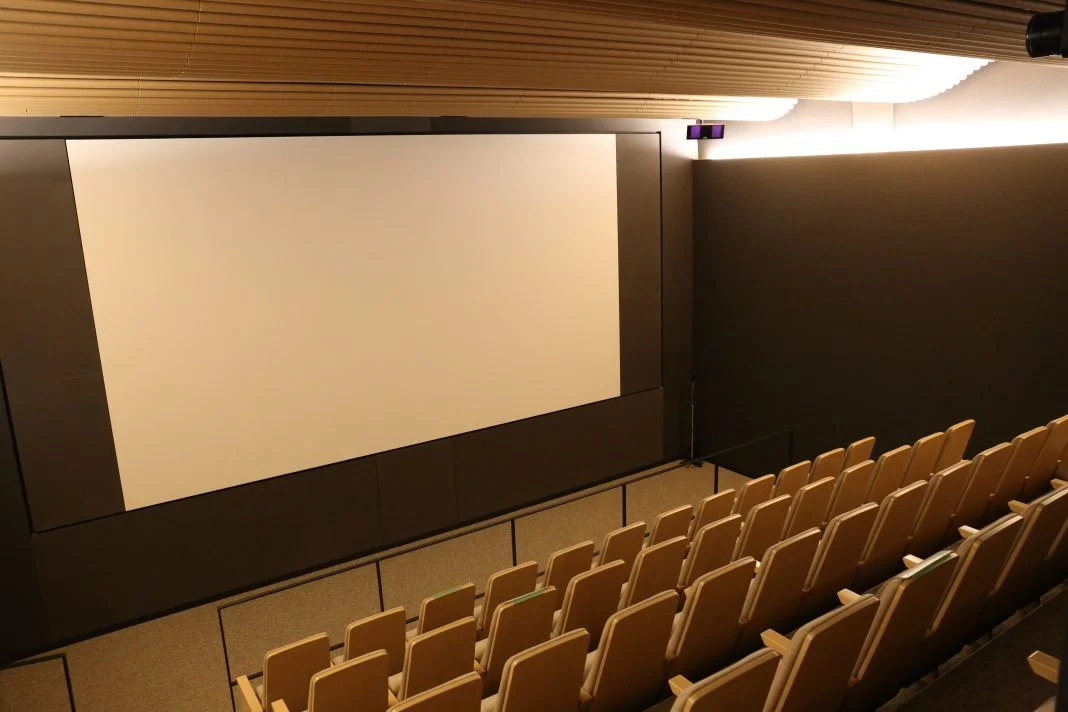
I watched the Scroll of Space. Unfortunately, I cannot show any photographs, but the Mt. Fuji you get to see on the big screen from the perspective of a legendary dragon is truly powerful! It gets high marks for being something you can enjoy even on rainy days!!
The Cafe and Museum Shop, where you can pick out souvenirs and have a snack!
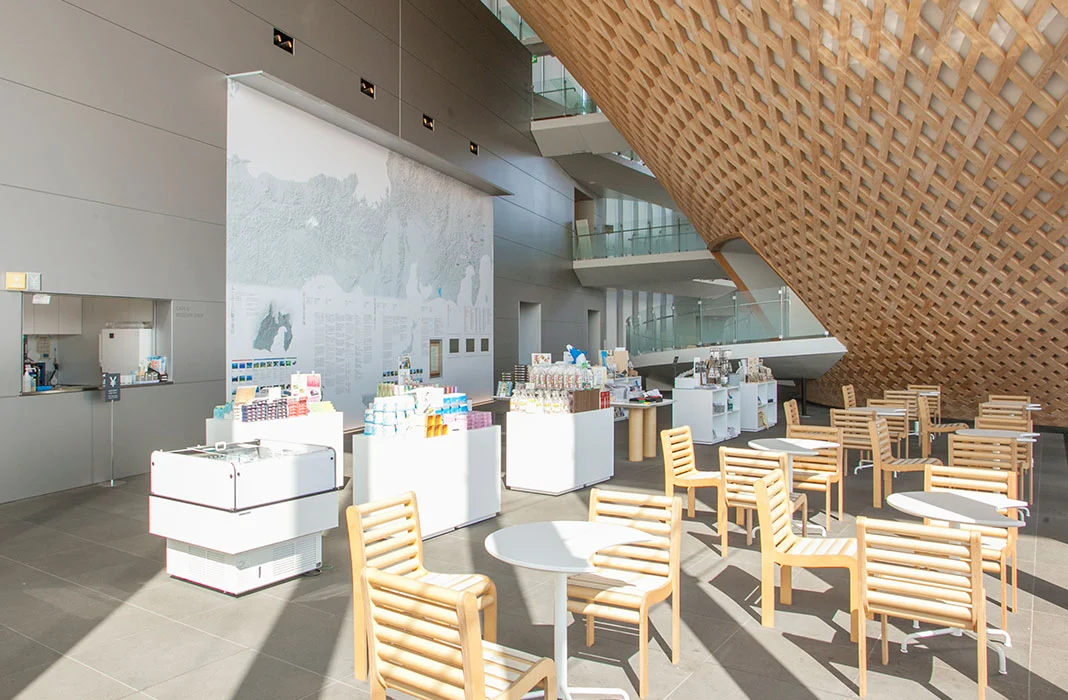
After you have gone through the whole facility, be sure to stop by the Cafe & Museum Shop. Here you will of course find the standard Mt. Fuji souvenirs, but also exclusive merchandise and products that are only available at this museum. Everything there was cute, with Mt. Fuji as the recurring motif!
I can’t show you one by one, so please come by and check them out for yourself!
I bet you will find Mt. Fuji to your liking.
Incidentally, as the name suggests, the “Cafe & Museum Shop” also has a cafe. The location is excellent, so why not savor the view and enjoy an elegant original menu using ingredients associated with Mt. Fuji?
Closing…
So, what did you think of Mt. Fuji World Heritage Centre, Shizuoka?
With both beauty and education on offer, this is a facility that both adults and children can enjoy!
Nearby you will also find Fujisan Hongu Sengen Taisha and Omiya Yokocho, where you can enjoy the famous Fujinomiya Yakisoba noodles. Visit them as well while you’re at it and enjoy all aspects of Mt. Fuji.
The Mt. Fuji World Heritage Centre Official Website: https://mtfuji-whc.jp/en/
